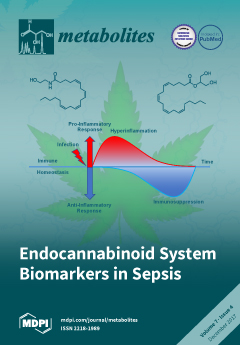Proteolysis is essential for all living organisms to maintain the protein homeostasis and to adapt to changing environmental conditions. ClpP is the main protease in
Bacillus subtilis, and forms complexes with different Clp ATPases. These complexes play crucial roles during heat stress,
[...] Read more.
Proteolysis is essential for all living organisms to maintain the protein homeostasis and to adapt to changing environmental conditions. ClpP is the main protease in
Bacillus subtilis, and forms complexes with different Clp ATPases. These complexes play crucial roles during heat stress, but also in sporulation or cell morphology. Especially enzymes of cell wall-, amino acid-, and nucleic acid biosynthesis are known substrates of the protease ClpP during glucose starvation. The aim of this study was to analyze the influence of a
clpP mutation on the metabolism in different growth phases and to search for putative new ClpP substrates. Therefore,
B. subtilis 168 cells and an isogenic ∆
clpP mutant were cultivated in a chemical defined medium, and the metabolome was analyzed by a combination of
1H-NMR, HPLC-MS, and GC-MS. Additionally, the cell morphology was investigated by electron microscopy. The
clpP mutant showed higher levels of most glycolytic metabolites, the intermediates of the citric acid cycle, amino acids, and peptidoglycan precursors when compared to the wild-type. A strong secretion of overflow metabolites could be detected in the exo-metabolome of the
clpP mutant. Furthermore, a massive increase was observed for the teichoic acid metabolite CDP-glycerol in combination with a swelling of the cell wall. Our results show a recognizable correlation between the metabolome and the corresponding proteome data of
B. subtilis clpP mutant. Moreover, our results suggest an influence of ClpP on Tag proteins that are responsible for teichoic acids biosynthesis.
Full article






